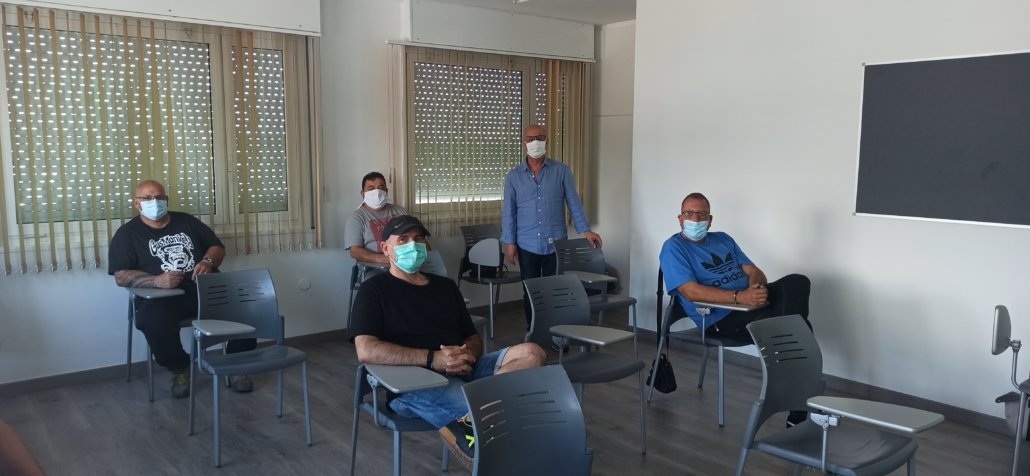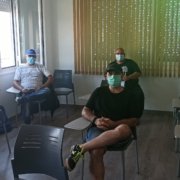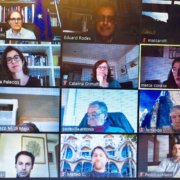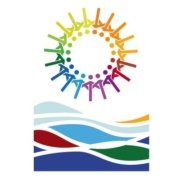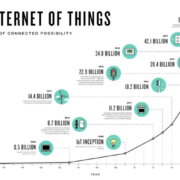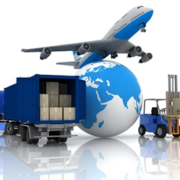In today’s modern world the true protagonists and heroes are the teachers, and their role in our port-logistics communities in particular is invaluable. I will begin this reflection by recalling a 1999 film that impressed me, entitled “Butterfly’s Tongue” by the magnificent Spanish film director José Luis Cuerda (Albacete 1947 – Madrid 2020), who died on 4 February.
The film gives the account of the life of a teacher from a small village in Galicia (in the North of Spain) who was concerned that his students should acquire knowledge and values. A sympathizer of the Second Spanish Republic, a renovator and a laic, he then finds himself facing the military uprising of July 18, 1936 that alters the life of the village, and marks the beginning of the Civil War. Cuerda ensured that through the cinematography and the script, the conflicts that were experienced in this small community were clearly represented. In the end the school where the protagonist works becomes a reflection of these tensions and transforms into a place to defence for everyone’s ideas and principles, for better or worse.
The teacher is a central element of the village and of the community, because he or she has contact with the students and the huge responsibility to transmit his or her knowledge and ideas to them. Simultaneously he is conditioned by the parents, who watch and to an extent control what the teacher transmits to ensure that it is in accordance with the generally accepted principles. The teacher and the community jointly embody the basic ingredient of the structuring of collective intelligence and behaviour.
A teacher is a person who helps students acquire knowledge and virtue.
Knowledge
What is knowledge? A generally accepted definition demarcates it as familiarity, awareness, or understanding of someone or something, such as facts, information, descriptions, or skills, which [can be] acquired through experience or education by perceiving, discovering, or learning. It can refer to a theoretical or practical understanding of a subject. It can be implicit (as with practical skill or expertise) or explicit (as with the theoretical understanding of a subject)[1].
Virtue
What about virtue in that case? Virtue (derived from latin: virtus, Ancient Greek: “arete”) is moral excellence. A virtue is a trait or quality that is deemed to be morally good and thus is valued as a foundation of principle and a reflection of good moral being. Personal virtues are characteristics that promote collective and individual greatness, and specify doing what is right and avoiding what is wrong.
Working on the development of knowledge and virtue through the Forma’t al Port programme (get trained in the port), a question arose that I had not asked myself before: who are the teachers in our community? This then spiraled into subsequent thoughts: do we know them and do they know us? Do we prepare with them the topics that are taught to the students in the academic environment? Do they share our values and our priorities?
The discovery and, certainly to me, surprise, was that so far in the community of the Port of Barcelona – not so much. Close and collaborative relationships between companies and training centres are few and hard to find. The Forma’t al Port programme has definitely been a turning point by favouring quite a few contacts with dual training opportunities through the workshops themselves and through the contact with participating sector associations, which created positive prospects for the students.
In April, an activity called Getting Talent will take place. This event will allow the teachers of the training centres that collaborate with us on a regular basis to come and visit with the companies of the communities for one or two weeks. The idea is to establish a relationship between teachers and professionals that favours such close relationship and the exchange of knowledge, experiences, concerns and expectations, among others. Ultimately it is to advance towards a new reality in which the preparation of people is built by all – what the experts call collaborative training that allows the development of a collective intelligence. Dual training and such teacher’s stage are very likely essential to that type of collaboration.
Collective intelligence emerges from the interaction of similar individuals in daily activities and in problem solving – a regular occurrence in a port community. It develops the capacity to participate in intellectual cooperation with the goal to create, innovate and invent, and as such should soon be a key determinant of efficiency. It should ultimately be accepted as a challenge that can be understood and effectively addressed by an organisation or sector.[2]
Learning by doing is an excellent strategy for the fostering of collective intelligence. Dual training and the training of teachers and company managers is an excellent way to move forward. It is a new challenge on which we can all work together.
Get involved and collaborate!
Eduard Rodés
Director
Escola Europea – Intermodal Transport
[1] Wikipedia
[2] Based on the study “Collective Intelligence Education, Enhancing the Collaborative Learning” by Jaime Meza et al. https://www.researchgate.net/publication/325650291
